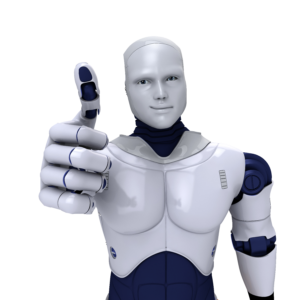“We start with an initial consultation, then automate the first selected processes within a space of days or weeks. You will reap the benefits from day one.”
Peter Ilgo, Founder and Managing Director

 Consulting
Consulting
Robotic process automation fit into organisations’ digital strategy. High level solution design – business case, future operating model, technical solution and automation roadmap.
 Design and Implementation
Design and Implementation
Automation of manual activities leveraging software-robots and related technologies – detailed solution design and implementation. Capability building and change adoption.
 Managed Operations
Managed Operations
Automated process daily operations and performance monitoring. Robot maintenance and further evolution. Continuous improvement of process robustness and automation level.
How does the process of implementing RPA look like for clients we work with?
Firstly, we setup a free consultation session to assess how RPA technology can help your business. We have plenty experience and will help you to understand the impacts and expected benefits.
Secondly, we help you select and automate one to three processes that represent a low investment with a high ROI and make a great case for automation. This has several advantages: as the business and IT get familiar with the technology they will actively come up with additional ideas to deploy robots to their advantage. Also, with automation in place, the organization starts to think differently – it will progressively change and standardize the processes to make them automatable. An absolute must for businesses striving to be competitive in the future.
Finally, we help you scale-up and adjust your operating model – free your workforce to focus on what really matters – satisfying customers and growing your business.
Feel free to organize a quick no-strings-attached call to pick my brains on all things related to RPA! Please reach out via Linked In to Peter Ilgo or feel free to send me an email to peter.ilgo@automationcoe.eu.
Automated Process Examples
Finance:
Accounts Payable
- Supplier on-boarding performed by a robot
- Supplier invoices sent by email received by a robot. Invoice data are automatically extracted, validated and posted.
- After having matched the data with a PO, the robot prepares the payments.
- Most of the invoices are processed straight through – without anybody needed to touch them.
Accounts Receivable
- Companies providing services to multiple clients often have manual AR processes. Accountants need to consult employee timesheets for information how much time has been booked by each employee/contractor for which client/project. Then they need to go to contracts to determine contracted rates per project role. Finally, all the information is combined to produce client invoices. The entire process can be automated.
Reporting
- Many companies regularly prepare various financial and operational reports. This task consists of downloading data from multiple systems that might include external sources e.g. websites, loading the data into an internal database, generating and distributing the reports. Most of the tasks long the reporting process can be automated (apart from analysing and commenting the results).
Operations – Online Retail:
Product additions
- In online business the robot can shorten the time and reduce the effort required to display new products online. It can receive product sheets from suppliers, format them and prepare for upload to internet. In parallel it can forward product photos received from the suppliers to internal visual team and follow up with suppliers if necessary. The internal team can focus on improving the visuals and product descriptions.
HR:
Employee on/off-boarding
- A candidate after having passed an interview fills in a form on a provided laptop. Starting from there a robot creates the new employee in company’s systems, generates required logins, email address and sends an on-boarding email to the employee. The HR gets robot’s activity report.
- When an employee is leaving the company, the robot deletes its entries from the systems and archives email inbox for a defined period of time. The HR is notified about a successful deletion.
Sales back-office:
Order processing
Sales commissions calculations
- Product/service orders often arrive by email and are manually re-keyed into companies’ systems. The orders can be standardized and automatically picked up and processed by a robot thus reducing the error rate and shortening the sales cycle.
- In a franchise network where the money is paid by the franchisor to the franchisees, a robot can periodically pull out required data, calculate payment amounts and prepare the payments
- In travel industry the payments are made to travel agents and distributors for selling travel, rooms, etc. A robot can regularly check customer payments and based on those calculate the commission to be paid to the travel agents and distributors.
IT:
Two or more systems synchronization
- Because of historical reasons many companies maintain similar types of data across two or more applications. Building interfaces is costly and not always provides required flexibility. The robots can be used to:
- Ensure that all new entries in one system are automatically retyped in other systems (by the robot)
- Continuously check for data inconsistencies and where the records across the systems do not match report the discrepancies and/or automatically correct them
Supply Chain:
Stock level management
- In integrated supply chains the companies across the chain inform others about actual stock levels. This is often done by sending a report or depositing a file on a defined shared location from where it is manually picked up and loaded into other companies’ systems. The report generation, sending, receiving and uploading can be automated by a robot.
Banking Front-office:
New client, account and products setup
- While setting up new clients, accounts and other products, the front-office employees in many banks need to re-enter the client data several times in multiple systems. Using a software-robot, the relationship manager enters the client data only once, the software-robot then completes the job. The data entry process can be sped up by 75% and, importantly, the bank employee can focus on serving the client.

